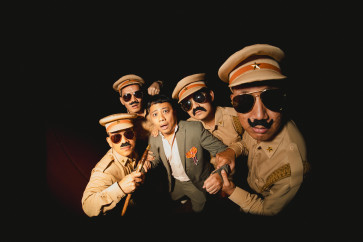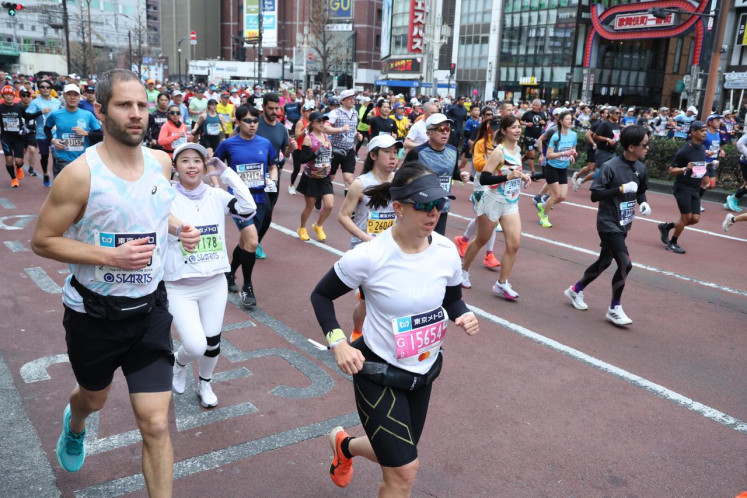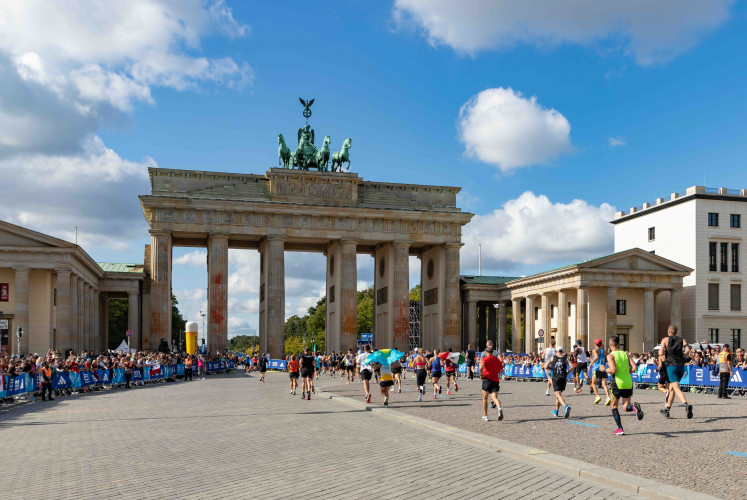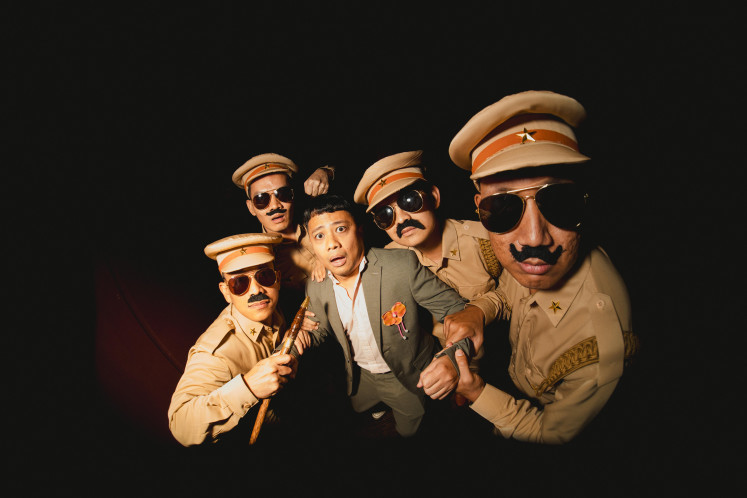Roy Putranto at the 2024 Berlin Marathon, where he was named the fastest Indonesian man to cross the finish line.
How far would you go for a run?
For Roy Putranto, 42, who spends his weekdays behind a desk, his runs have taken him as far as Berlin, Tokyo and Boston.
“Berlin was fancy for me. I was named the fastest Indonesian man there,” he says.
“Boston felt more prestigious because you actually have to qualify to run it.”
But it’s not just fast runners like him who are traveling thousands of kilometers away to run. From Singapore’s humidity to Berlin’s brisk autumn, a growing number of people are traveling overseas for one specific reason: to race.
What was once known as “the cheapest sport” has now become a reason to fly. For many, race day is the centerpiece. The destination just follows.

Thank you!
For signing up to our newsletter.
Please check your email for your newsletter subscription.
Chasing challenges
From variety to cooler climates and challenges, runners of all paces are finding races to join in various cities abroad.
“My coach told me that because of the temperature and pollution, running a full marathon in Indonesia isn’t ideal. The risk of injury is much higher,” Roy explains.
“It puts more damage on your cells and slows your recovery. That’s why many runners choose to race abroad: to actually perform better.”
That’s one of the reasons Erika Dianasari, 44, heads abroad. She has run marathons in Bali, Singapore, Berlin and Tokyo. For her, the cooler climate and extra safety make all the difference.
“In Bali or Jakarta, it starts at 4 a.m. and has a seven-hour cut-off time. By 11, it’s already so hot. People will drop,” she says.
“I already train in Jakarta's heat 3-4 times a week, so it's boring to just join races here and run the same roads.” - Jet Damazo
Marathons abroad also feel safer: no rogue cars or motorcycles cutting through the course. And they push you harder.
As his first full race, Tieto Ikhsan, 30, originally aimed for the Bandung Marathon, until Singapore came up, too. The two races were just a few months apart.
“Singapore is on a higher tier with more international runners, so I tried to prove myself,” he says.
“There’s more uphill and downhill. The worst part is the humidity. We get tired more easily. I wouldn’t recommend it for first-timers.”
Like Erika, Jet Damazo, 44, who has run races in Nagoya and Cardiff, appreciates the later starting times abroad. Usually scheduled during spring and autumn, races abroad often start at 9 or 10 a.m.
Jet Damazo with her running buddy in Cardiff in 2024, after finishing the first of the six SuperHalfs half marathons. (Courtesy of Jet Damazo)
“I love running because it gives me incremental achievements, seeing myself running a bit faster and a bit longer, week by week, month by month. We then test ourselves by joining different races, chasing new personal bests or personal records with each race,” she says.
“I already train in Jakarta's heat 3-4 times a week, so it's boring to just join races here and run the same roads.”
New cities, new finish lines
For some, one medal isn’t enough.
The World Marathon Majors medal goes to runners who finish Tokyo, Boston, London, Sydney, Berlin, Chicago and New York. Sydney became the seventh Major in 2024, though the official Six Star medal still stands, for now. Cape Town and Shanghai are under review, which could mean a new Nine Star medal.
Roy and Erika are both chasing theirs, so their future travels will be dictated by the medals they don’t have yet. Roy has collected three stars so far and will run in New York in November. Erika has two and plans for Chicago in October.
“Not only the medals, we’re also chasing a variety,” Erika says.
“Berlin and Tokyo’s routes are flat. New York is more challenging with uphill roads.”
The Marathon Majors aren’t the only game in town. There’s also the Superhalfs program, a 21K series that spans Lisbon, Prague, Berlin, Copenhagen, Cardiff and Valencia.
“Joining the six-city Superhalfs series gives me a new fun goal to work toward. It forces me to visit cities I probably never would have, like Cardiff,” says Jet, who is preparing for Valencia in October.
To achieve these goals, runners train for months before race day. Planning the travel itself can also take up to a year.
“European embassies can hold your passport for up to two months. Japan is easier, I’d say three months of planning is enough,” Roy shares.
“The entry for races usually starts 9–12 months ahead, that’s how far ahead we plan,” Jet adds.
“We usually arrive a week before to acclimate. We do at least two scheduled runs, including a shake-out run, have a carb-load day, and then a rest day before the race to keep our legs fresh.”
Post-race? That’s when no rules apply, and the more typical holiday plans begin.
The price of the run
“The race is cheap; the trip isn’t,” Erika says.
“That’s why runners abroad are usually in their 40s or 50s. At midlife, we have the time to train and travel, and the financial means to cover it.”
Erika Dianasari at the Tokyo Marathon in 2025, where the weather is cooler and the roads are safer. (Courtesy of Erika Dianasari)
Singapore Marathon’s registration alone, Tieto notes, cost him S$169 (US$132.13), compared to just Rp 850,000 (US$52.34) for Bandung. Flights, hotels for at least two nights, meals, often for your whole family, add up.
For Berlin, Roy says flights cost around Rp 12 million–14 million. Sharing a room can bring the cost down to about Rp 600,000 per night. You’ll spend around Rp 400,000 per meal. And, registration alone is 200 euros (US$234.82).
But sometimes, even money isn’t enough. Most world-class marathons require you to enter a ballot. If you're lucky, you get in and start planning. If not, there’s always another way: travel agents.
While it’s more expensive than DIY-ing your trip, using an agent comes with a guaranteed race slot.
Golden Rama offered a 4-day, 3-night 2025 London Marathon package at The Langham starting from Rp 52 million, or Rp 68 million for a private room. It excludes international flights and visas, which add at least another Rp 20 million.
Yuk Travel’s TCS Sydney Marathon package starts at Rp 18.8 million. Even fun runs like Disneyland Hong Kong’s Disney Run start at US$1,055 per person.
Runners pass through the iconic Brandenburg Gate in Berlin, which hosts one of the World Marathon Majors that make up the Six Star Medal. (Shutterstock)
Remind me, who said running was cheap?
But maybe that’s not the point.
For these runners, going the distance isn’t just about pace, it’s a full-time hobby, a financial commitment and maybe even a personality trait. You train for months, spend millions, apply for visas and pray to the ballot gods… all for a few hours of running, a shiny medal (maybe a banana) and a hit of self-fulfillment.
And yet, they do it, again and again.
Because for some, the best way to see the world isn’t by walking through it. It’s by running 42.195 kilometers and calling it a vacation.
Adelia Anjani Putri, a communications consultant and former reporter, has found herself writing again. She’s also exploring a career shift that would let her pursue her passions for cooking and catsitting—ideally with a paycheck.


























